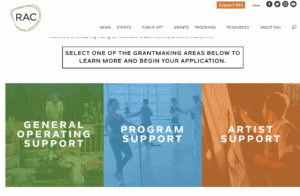We received an email blast the other day about email blasts. As email marketing advocates, this piqued our interest.
(Side note: An email blast about email blasts is like a company that sells shelves and stocks those shelves on shelves. Makes your head spin.)
Anyway, the article brought up lots of good points. We’re huge fans of email marketing and recommend it for many of our clients. Needless to say, we love articles like this that outline the benefits of implementing your own email marketing campaign; however, there were a few points we’re not sure we 100% agree with:
Email Marketing Sticking Point #1: What about small businesses with small mailing lists and low mailing frequency?
A lot of discussion around email marketing focuses on theory or best practices with larger businesses (and larger mailing lists and higher mailing frequency) in mind. One could argue that the same practices should apply to smaller businesses with smaller mailing lists and lower mailing frequencies, but we’re not sure they do.
For example, the term “email blast” generally has a negative connotation that means you sent an email to everyone on your list without segmenting the list or personalizing the content for each person. If you’re a large clothing retailer, yeah, that’s probably a no-no. You might want to segment most of your emails by gender or purchase history and only send an “email blast” to your entire list when you have content that applies to everyone, like a Black Friday sale.
But what about a local cupcake shop with 200 people on their mailing list? Say they want to send an email announcing the beginning of wedding season and remind people their cupcake shop is open for business. Would it really be so awful to send the email to all 200 people on the list? Assuming those people deliberately opted-in to the email list, an email like that shouldn’t annoy them. They can always unsubscribe if they’re no longer interested. The cupcake shop owner’s time is probably better spent somewhere else rather than creating 5 different emails to be sent to 40 people each based on their purchase history.
At some point we need to use common sense and look at the reality, not just theory.
Basically, you want to look at your list and your mailing frequency and do what’s right for you. By monitoring open rates, click rates, and unsubscribe rates, you’ll be able to see if you’re emailing at the right frequency, and you should be able to identify any segmenting opportunities. Creating different content for small sub-segments might not be worth the time.
Email Marketing Sticking Point #2: Does using the recipient’s name really matter?
Be honest: If an email says “Dear Jack” before telling you about their latest sale, do you really think they wrote the email with you in mind? Does the email truly feel personalized?
If the content is not personalized for you, simply throwing your name in the salutation line probably isn’t going to make you feel loved.
And if the content is personalized for you (e.g. product usage info on a product you just bought from them), then isn’t that what engaged you, not the use of your name?
Frankly, no automated list, however segmented, is ever really making a personal connection- and that’s fine. That’s not what we’re there for. We’re there for information or deals or whatever the company’s schtick is. Throwing a first name in doesn’t change anything.
Also, to use someone’s name, you need to have good data. To have good data, you either need orders from your customers or need to ask their name when they subscribe. Going back to the cupcake shop, what about Jane Doe who visits the site and doesn’t order right away but considers signing up for emails? Do you want to risk asking for her name on your email sign-up or do you want to make it as quick as possible for her to sign up by only asking for her email address?
We’re not saying “Dear Potential Customer” is better. It’s not. It’s way, way worse. We’re saying skip this whole part altogether and get straight to the meat of what you’re offering your subscribers.
According to this article from Marketing Land, using the person’s name can increase open rates by 2.6%. Sounds good, right? But let’s break it down:
- In our cupcake shop example, 2.6% of 200 would be about 5 people. Again, sounds good, right?
- But in order to send personalized emails to all 200 of those people, you need to ask all of them for their names while signing up. You might lose more than 5 people in doing that. This article from QuickSprout suggests that you can increase conversions 26% by simply removing one form field. Now, while you can probably get away with having up to 3 form fields without annoying your user, it is still a risk. Will the risk pay off?
- Even if you do decide to take the risk, you don’t want to use the person’s name in every email. You might start sounding like Jan Brady.
A 2.6% gain on a few emails might not be worth the trade-off of:
- Deterring potential users from signing up in the first place
- Spending time ensuring you have good data.
(Not to mention it’s just one more component in each email you’ll need to test).
OK, That’s Great. But How Should I Manage My Email Marketing Campaigns?
Overall, medium-to-large companies with enough resources (or with a digital marketing agency to help them) can afford to segment their list and personalize the user experience. But that doesn’t mean it’s the right solution for everyone. The right solution is the one that works for your business.
Your email marketing program should:
- Be manageable and realistic. A/B testing sounds nice; however, you might not want to bother if you can hardly get one email out the door each season.
- Be legal. Always make sure you only email people who have explicitly opted in or are actual customers of yours. Include an unsubscribe link in every email that goes directly the unsubscribe page and doesn’t use any tricky language. Don’t make people jump through hoops to get off your list.
- Be relevant. You might see better results from segmentation or you might just be creating more work for yourself. If your cupcake shop send 4 emails per year with mouth-watering photos, seasonal information, and a coupon, you can bet that a large percentage of your list will be interested. Further segmenting the list might not net many more sales, but will take a lot more work.
Final Remark on Email Marketing vs. Email Blasts
One point in the article we wholeheartedly agree with is this: “If you do decide to keep email blasting, just do us a favor and call it something — anything — else.”
Email newsletter, email marketing campaign, quarterly mailing—all are better than “email blast.”
If you need help with your email marketing program, or even just want ideas for what to call it besides an email blast, drop us a line.






